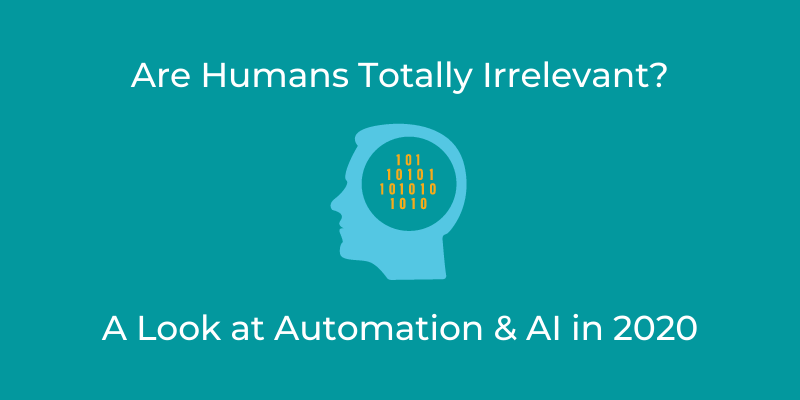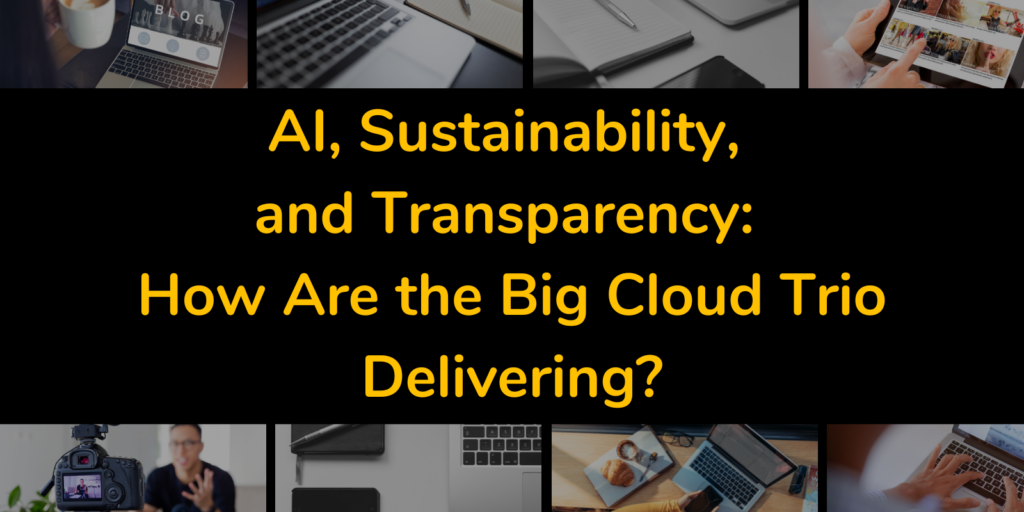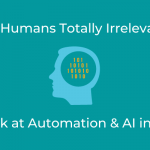Facebook, YouTube, and any other huge online company probably discovered early on that not everyone has the best of intentions when publishing something on the internet.
Back then, how did they handle content deemed abusive, racist, violent, or anything else considered questionable? Simple; they removed the content. Amidst the bean bags, stale pizza, and Mountain Dew, there was probably some scrappy college kid reviewing a few dozen comments and pictures their users uploaded.
Fast-forward to 2020…
Facebook, YouTube, and other online companies have billions of users. YouTube has 500 hours of content posted every single minute with other companies touting similar, insane numbers! Imagine that kid trying to keep up now. It’s just not possible!
Companies have had to adapt to their ever-growing user base. Rather than hiring thousands of scrappy college kids, it makes complete sense to rely on technology to solve this problem; enter, automation and artificial intelligence (AI).
How Did AI Change the Scene?
AI, or, more specifically, computer vision can detect objects from both images and videos. Companies like Facebook have to constantly screen images for anything that violates their policy, a process that once required a human but can now be performed by computer vision.
In recent years, we’ve seen firms such as Amazon and Microsoft effectively democratize artificial intelligence. No longer are years of research in machine learning algorithms required–nor vast quantities of training data or domain expertise.
Computer vision algorithms can now be taken “off the shelf,” in the form of easy-to-use developer APIs, and integrated with software services and applications, thereby letting businesses augment their existing product capability with cutting-edge artificial intelligence.
Even if “off the shelf” APIs aren’t fit for your unique business purpose, vendors also offer point-and-click web interfaces that further lower the barrier to entry for AI adoption.
But are automation and AI the right way to go? This has become a more pressing question during the COVID-19 pandemic, as companies have been forced to relocate staff to their homes to work off-site.
According to this recent Reuters article,
“…Google said that to reduce the need for people to come into offices, YouTube and other business divisions are temporarily relying more on artificial intelligence and automated tools to find problematic content.”
“Facebook also said the decision to rely more on automated tools, which learn to identify offensive material by analyzing digital clues for aspects common to previous takedowns, has limitations.”
People are hesitant about handing over responsibilities to computers and rightly so. (Even though my moniker is Adam the Automator, I believe we still have a ways to go before we can or should depend on automation and AI to manage our online lives.)
Automation: The Key to Monitoring Users?
At first, that scrappy college kid could define what’s “bad” and “good” with simple if/then logic. If the text contained foul language as defined by a given word set, he would have simply created a script to check for those words and remove them. He was able to automate a lot of the work because the patterns were predictable.
Eventually, that kid started getting complaints from users that their content was being removed for no good reason. It turned out that the script he built wasn’t taking into consideration language nuances and sarcasm. He added some exceptions here and there, but eventually his script became unwieldy and impossible to maintain.
Solving problems like reviewing content and making approve/disapprove decisions with automation works great when predictable patterns emerge. Automation can take care of the obvious cases, the low-hanging fruit. But content (like life) is rarely that black and white.
Automation needs help, and that’s where AI comes in.
Recognizing “Unwanted” Behavior Is Really Hard
When you notice a picture of a cat, you see a cat. When you read a tweet filled with racist bigotry, the slurs are immediately noticeable. You can instantly recognize images as you scroll through your Facebook feed. You take for granted what your brain is capable of. For your brain, recognizing a dog is a generally easy task; to a computer, it’s insanely difficult.
Are you a tech expert? Do you want to share your knowledge with others? Do you love research? Contact us to learn more about freelance opportunities at IOD.

The Solution: Machine Learning
To help a machine undertake such tasks, a branch of artificial intelligence called Machine Learning (or ML for short) can be deployed.
Software applications are traditionally programmed by a human. A machine then follows these rules and behaves in a predictable manner. Machine learning is a departure from this relatively static approach toward a more dynamic model whereby the machine can learn without being programmed by a human.
Machine learning itself falls into a few different areas; here, we’ll look at two of the most deployed types of machine learning: supervised and unsupervised learning.
Supervised Learning
Supervised learning is a commonly used branch of machine learning. The “supervised” aspect originates from the idea that the algorithm uses training data to help it arrive at a prediction–like having a mentor supervise the prediction processes.
Text classification is a form of supervised learning. It is the process of predicting which category data belong to and is based on training data previously supplied to the machine. For example, a collection of tweets (often known as a corpus) could be supplied and separated into two categories: positive tweets and negative tweets.
New incoming data could then be checked against these categories by a machine learning algorithm, such as a Bayesian classifier, to determine which category the incoming tweet belongs to.
It must be said that algorithms don’t have perfect track records, just like humans. Supervised learning does require continual learning to adjust, and that learning period might be problematic, given the veritable assault of content filtered by these platforms. Those early mistakes may mount before automations become tried and true.
Unsupervised Learning
Unsupervised machine learning is the process whereby the machine infers patterns or makes predictions without references to training data. This works best when a company has no available data to use for training.
Clustering is a form of unsupervised learning. One example of this is when a machine attempts to organize data to describe its structure, thereby making it easier for humans to organize data and consequently derive meaning. It’s easy to see how machine learning and big data complement each other.
Additional Use Cases
In addition to the need to protect social users, AI can be applied to companies’ internal processes for higher efficiency and more accurate results, for instance, in the areas of corporate recruitment and bank lending.
1. Automation and AI in Recruitment
In today’s competitive employment market, HR departments often have hundreds of applications for a single job. Application Tracking Software (or ATS) is used regularly in recruitment processes and typically involves keyword matching parsers to find candidates that match a given set of requirements. With AI on the scene, this process has changed.
Optimizing the Recruitment and HR Process
Before an interview is even scheduled, chatbots can be used to get to know prospective candidates better. Developed using technology such as the Microsoft Bot Framework, chatbots can ask candidates specific questions to assess their suitability before a meeting IRL.
With advancements in natural language understanding, products such as Microsoft’s LUIS help businesses identify the underlying intent and main topics being sent to their chatbot by applicants as they type to it.
All of this can help optimize the recruitment process for both HR departments and applicants.
Application Engagement
Recruiters can sometimes find candidates are unexpectedly taken off the market. This can be for a number of reasons; maybe they took another job or maybe they had a bad recruitment experience, such as waiting too long for feedback.
Artificial intelligence can help prevent the chances of this happening by making sure applicants are kept informed and engaged throughout the entire recruitment process.
For example, chatbots or virtual agents can be deployed to let users check in and see how their application is going.
Accuracy and Reliability
While artificial intelligence is advancing each day, inaccuracies can creep in. This may be due to insufficient training data or biased datasets. For example, Amazon had the unfortunate experience of finding out its AI recruitment process favored men when AI was deployed.
2. Screening and Risk Assessment Loans
Financial services is another area where AI can have an impact, such as during the loan screening and risk assessment process–a process that typically involves data capture and crunching to determine the level of risk being taken when lending money to an individuals or business. It also entails ingesting multiple datasets, and no two applications are typically the same.
Finance companies can use machine learning solutions to help them with this process, enabling them to more easily (and accurately) predict who has a higher risk of not making their loan payments. Not only does this optimize a bank’s business processes, but it can also flag a human to review applications that are “in the grey.”
Automation and AI Aren’t Silver Bullets
AI experts and technology professionals have made huge strides with automation, but there’s still plenty of work to be done.
Consider Reddit’s AutoModerator function and others like it that flag offending posts based on keyword criteria. These systems can be fairly rigid and lack the nuance that AI can inject into the process.
For example, the AutoMod tool developed in 2015 by Redditor Chad Birch was a rules-based tool that identified offensive posts. It was deployed across the site with varying levels of success; between March and October of 2018, it resulted in 22% of all submissions being removed (about 17.4 million posts).
While the keywords were no doubt offensive, the context in a lot of those posts wasn’t, and many Redditors were annoyed when their posts were removed.
A better solution for Reddit would be to forget the keyword criteria solution and deploy text analytics and natural language processing (NLP) approaches, such as part-of-speech tagging. This would let the machine predict (with accompanying confidence scores) the likelihood of text or posts containing offensive posts, all of which would help improve users’ experience sharing content on the platform.
Human Influence Isn’t Obsolete
Software will break and AI will make mistakes as long as they’re designed by human engineers. The goal is to limit those mistakes before making our next big breakthrough.
AI is also not yet sophisticated enough to tackle our biggest problems. Accordingly, humans must be involved in especially important decisions. Teams can offload secondary tasks to AI or introduce human input after the fact, i.e., once an algorithm has performed a job. This nature of intervention will vary with algorithmic performance; it is a unique conundrum, where human influence is variably problematic yet required at various points to address challenges.
Computers are supposed to do things more efficiently than we are. To realize those outcomes, we have to tailor our AI appropriately, involving trial and plenty of error. Engineers must additionally weigh the benefits of these automations against the potential chaos of missteps.
AI and automation have been a powerful addition, but companies still have to be ready to step in as needed–to fill in the gaps and pick up the slack.
Are you an expert in AI or Machine Learning? We’re in need of knowledge like yours! Contact us if you’re interested in researching or blogging for IOD.







